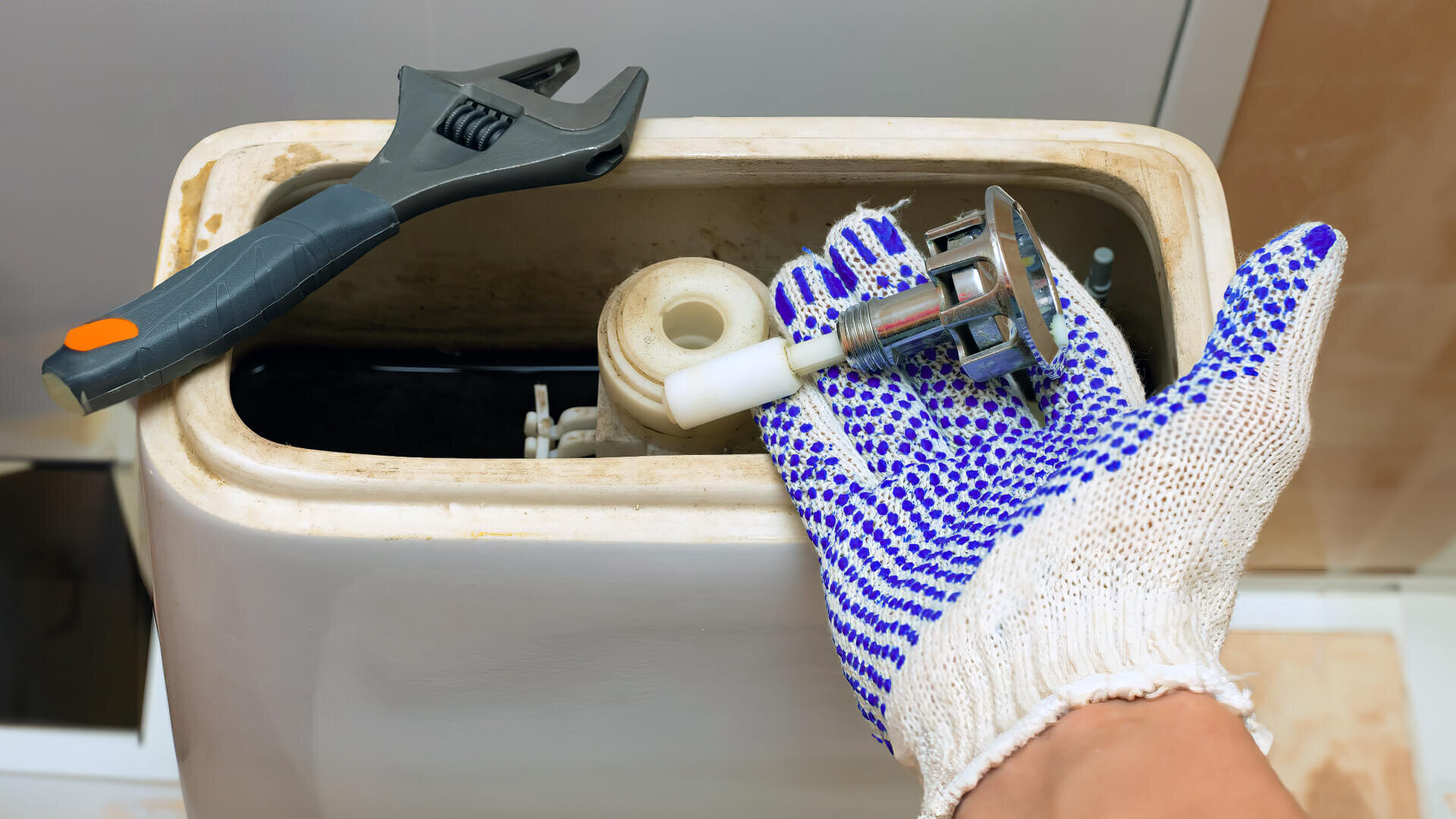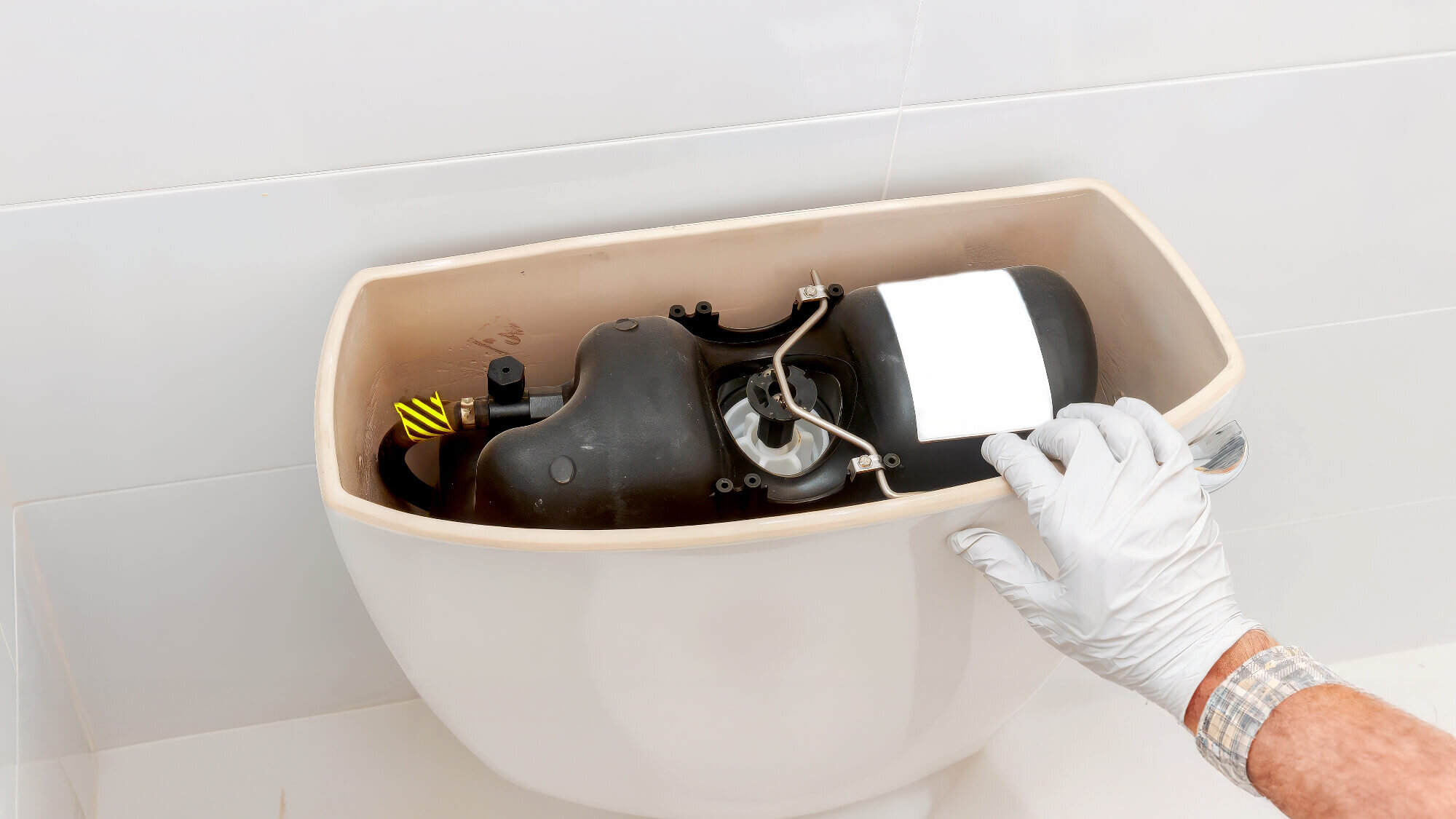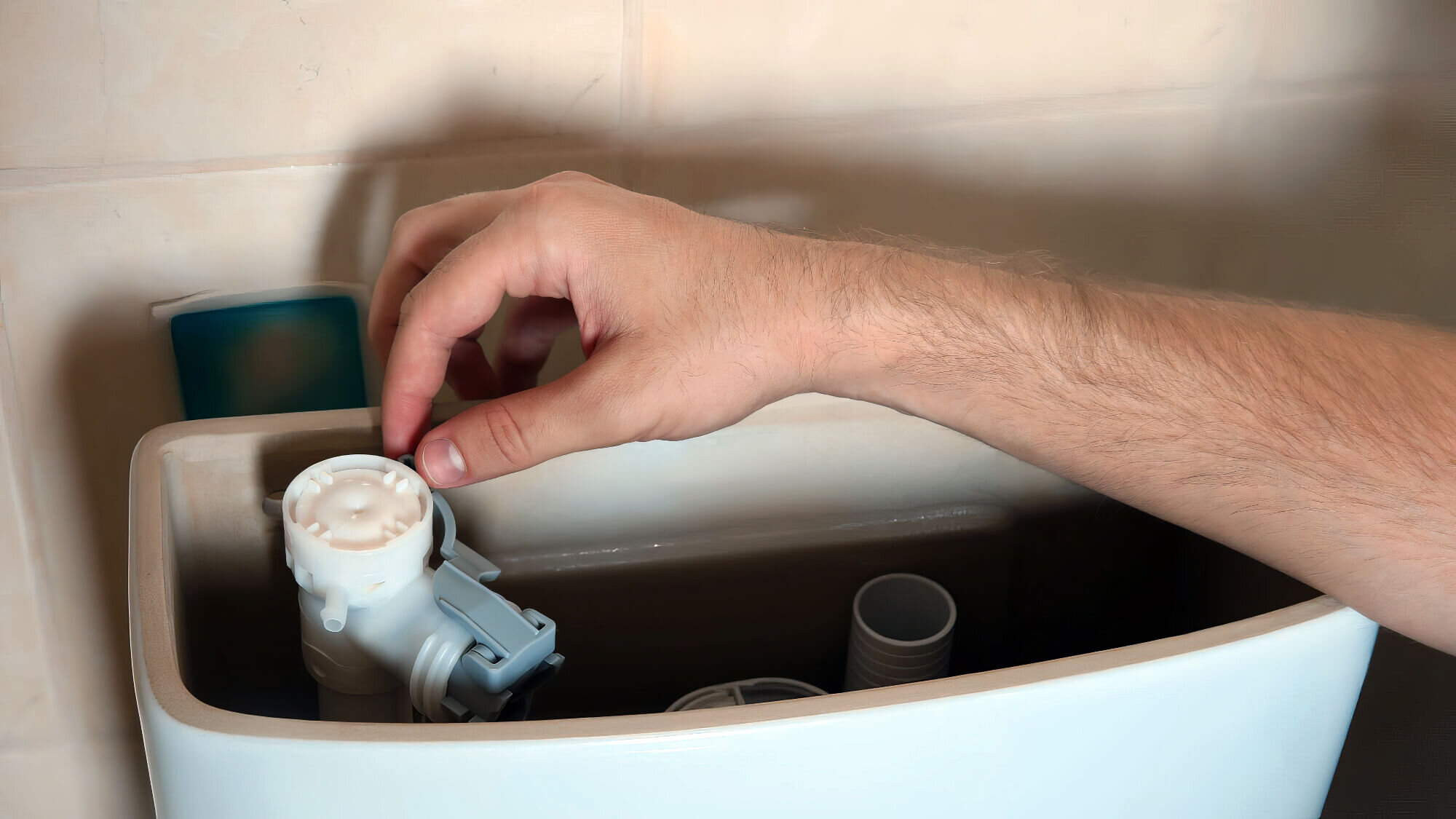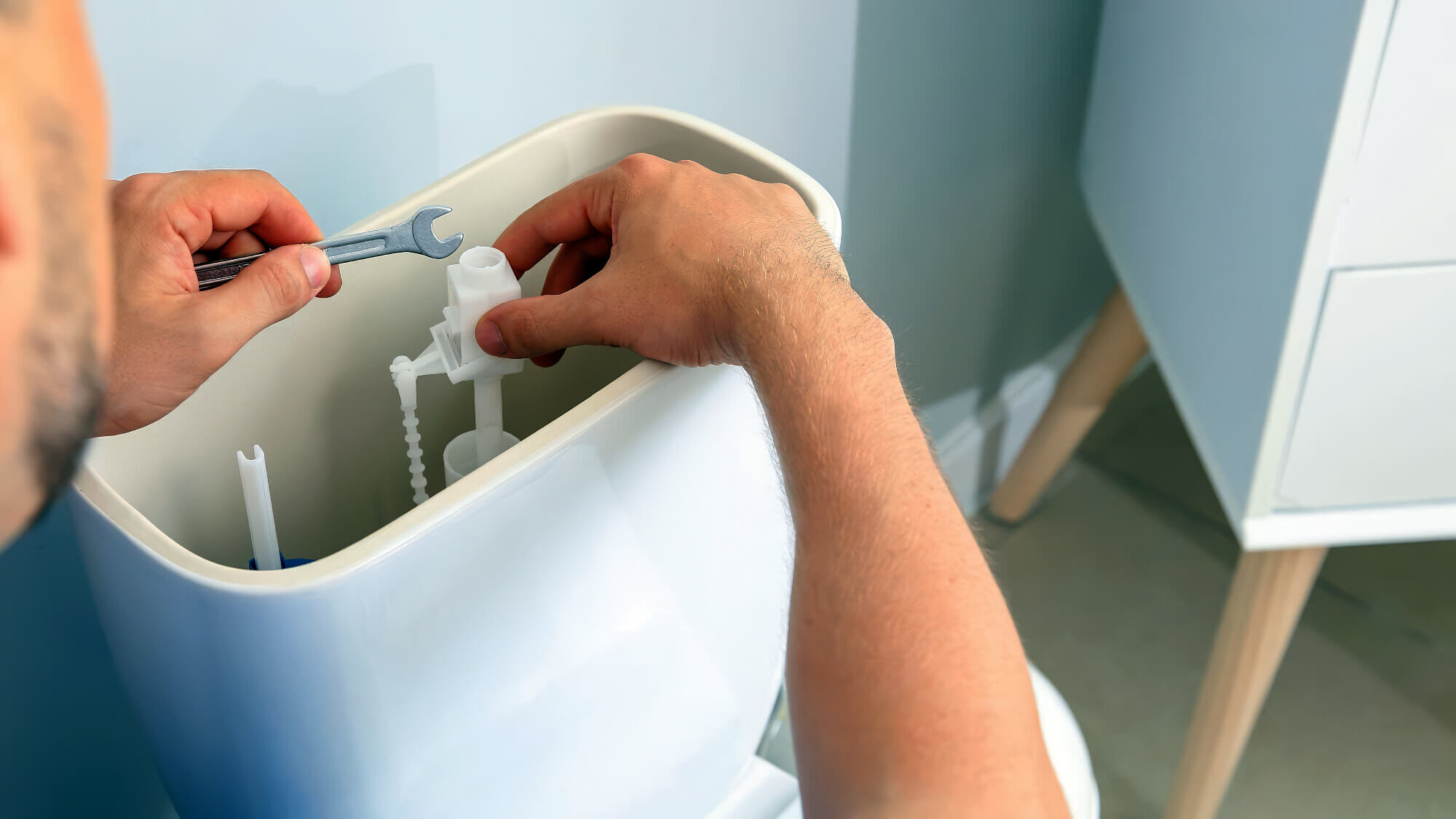In the fiscal year 2022, Australian households consumed approximately 1,779 gigaliters of water. Australia’s effective water management is vital as the driest inhabited continent on earth. One often overlooked way to contribute to conservation efforts at home is by maintaining the correct water level in your toilet tank.
Getting the water level right in your toilet tank is crucial for good flushing performance. Not only does it prevent wasting water, but it also helps keep your water bill down. Adjusting the water level is a straightforward task that can make a big difference in your household’s water use.

How the Toilet Tank Mechanism Works
Getting to know the basic parts of your toilet tank can help you keep the water level just right, ensuring everything runs smoothly and preventing any problems down the track.

Key Components of Your Toilet Tank
Inside your toilet tank, several components work together to manage the water level. The fill valve controls the water flow into the tank. As water fills the tank, the float cup or ballandarm float rises, shutting off the fill valve when the correct water level is reached.
The overflow tube is another critical part that ensures water doesn’t exceed the ideal water level in your toilet tank. If the water level in your toilet tank is too high, excess water flows into the overflow tube and down into the toilet bowl, helping to prevent overflows.
Adjusting Water Levels
Notice the water level in your toilet bowl isn’t quite right? You’ll need to tweak it. Start by peeking inside the tank. If it’s below the overflow tube, you might have to raise it.
Conversely, if the water level in your toilet bowl is too high, you’ll need to lower it. Adjusting the toilet float or the fill valve can help you achieve the correct water level in your toilet tank and prevent excess water from flowing into the bowl.
Proper water level adjustment is crucial for efficient flushing and preventing excessive water consumption. Knowing how to adjust the water level in your toilet can save you from costly plumbing or heating issues and reduce your water bill.
Signs You Need to Adjust the Water Level
It’s important to regularly inspect your toilet tank for signs that the water level needs adjustment:
- Weak or Incomplete Flushing: If the water level in your toilet tank is too low, it may cause weak or incomplete flushing, leaving waste in the toilet bowl.
- Constant Running Water: If you hear water running constantly, it’s likely that the water level is too high, causing the overflow tube to drain excess water into the toilet bowl continuously.
- Water Levels Too High: When the water level is too high, the tank can overflow, leading to wasted water and higher bills.
- Water Levels Too Low, Leading to Dry Flush: A low water level can result in a dry flush, where there isn’t enough water to flush the toilet properly, leaving debris behind.
Regularly inspecting your toilet tank can help you detect these issues early and adjust the water level to ensure efficient operation.
Step-by-Step Guide: How to Adjust the Water Level in Your Toilet Tank
Adjusting the water level in your toilet tank is a straightforward process that can help improve flushing efficiency and prevent water waste. Follow these steps to ensure your toilet is working optimally.
Step 1: Turn Off the Water Supply
Before making any adjustments, it is crucial to turn off the water supply to your toilet. Locate the shut-off valve on the wall behind or near the toilet. Turn the valve clockwise until it stops. This will prevent any accidental flooding while you work on the tank.
Safety Tip: Never force the valve if it’s stuck. If you encounter resistance, use a cloth or pliers to turn it, or contact a plumber for assistance gently.
Step 2: Inspect the Current Water Level
Once the water supply is off, carefully remove the lid from the toilet tank and set it aside. Check the current water level inside the tank.
Ideally, the water level should be about 1 inch below the top of the overflow tube. If it’s too high, water may overflow into the toilet bowl, and if it’s too low, it may result in weak or incomplete flushing.
Troubleshooting Tip: If you notice any leaks or a constantly running toilet, these issues may also indicate that the water level needs adjustment.
Step 3: Adjust the Float
The float controls the tank’s water level. There are two common types of floats: ball floats (attached to a long arm) and cup floats (attached to the fill valve itself).
- For Ball Floats: If the water level is too high, gently bend the arm of the float downward to lower it. If the water level is too low, bend the arm upward to raise it. Make small adjustments and check the level after each adjustment.
- For Cup Floats: Locate the adjustment screw on the top of the fill valve. Turn the screw clockwise to lower the water level or counterclockwise to raise it. For example, with ball floats, make small adjustments and check the water level in the tank.
- Safety Tip: Be careful not to apply too much force when adjusting the float, as this could damage the mechanism.

Step 4: Adjust the Fill Valve
If adjusting the float doesn’t achieve the desired water level, you may need to adjust the fill valve. The fill valve controls the flow of water into the tank.
- Adjusting the Fill Valve: Look for the fill valve’s adjustment screw or clip, depending on the model. Turn the screw or move the clip to adjust the water level. If the water level is still too high or too low, continue making adjustments until the water level is about 1 inch below the overflow tube.
- Troubleshooting Tip: If the fill valve continues to malfunction after adjustment, it may need to be replaced.
Step 5: Turn the Water Supply Back On and Test
Once you’ve made all necessary adjustments, turn the water supply back on by turning the shut-off valve counterclockwise. Let the tank fill up, and then flush the toilet to test whether the water level is correct.
- Testing: Watch the tank refill and check that the water stops at the correct level below the overflow tube. Ensure that the toilet flushes properly and that there are no signs of leaks or continuous running water.
- Safety Tip: After testing, replace the toilet tank lid carefully. If you notice any persistent issues, it may be wise to consult a professional plumber.
Common Mistakes to Avoid When Adjusting Water Levels
When adjusting the water level in your toilet tank, it’s easy to make mistakes that could lead to further issues. Here are some common pitfalls to avoid:
- Over-Tightening the Fill Valve: Over-tightening the fill valve can damage the mechanism, leading to leaks or improper water flow. Always tighten the valve gently and check for a secure fit without forcing it.
- Ignoring the Float’s Condition: A worn-out or damaged float can cause inaccurate water levels. Inspect the float for cracks or signs of wear and replace it if necessary to avoid inconsistent water levels.
- Failing to Secure Parts Properly: Ensure that all components, such as the float arm and adjustment screws, are securely fastened after making adjustments. Loose parts can lead to improper functioning or even tank overflow.
When to Call a Professional Plumber
While adjusting the water level in your toilet tank can resolve many issues, there are times when professional help is necessary.
If you notice that the toilet tank components—such as the fill valve, float, or overflow tube—are worn out, cracked, or damaged, adjustments alone may not fix the problem. Replacing the faulty parts is essential in these cases, and this might require a plumber’s expertise.

Additionally, if your toilet continues running, overflowing, or exhibiting low water pressure even after adjustments, it could signal a more complex issue within your plumbing system.
Ignoring these problems can lead to severe water damage, higher bills, or even a complete toilet failure.
Recognising when to call a professional plumber can save you from costly repairs and ensure that your toilet operates smoothly and efficiently. Don’t hesitate to seek expert assistance if simple adjustments don’t solve the problem.
Final Flush: Keep Your Toilet in Top Shape
Maintaining the correct water level in your toilet tank is essential for efficient water usage, cost savings, and the overall health of your plumbing system. Proper water level adjustment ensures that your toilet flushes effectively helps prevent water waste, and reduces the risk of costly repairs down the line. Regular maintenance, whether through simple DIY adjustments or professional assistance, can keep your toilet functioning smoothly and extend its lifespan.
If you encounter any difficulties while adjusting your toilet tank water levels or prefer to leave it to the experts, Big Blue Plumbing is here to help. We offer reliable and expert toilet plumbing services to ensure your system operates efficiently and effectively. Our team of professionals is ready to assist with any plumbing issues you may face, from minor adjustments to complex repairs.
Don’t let minor toilet issues turn into major problems—reach out to Big Blue Plumbing today for all your plumbing needs. Contact us now to schedule a service or consultation, and let our experienced plumbers keep your system in top condition.



